Every month we highlight one partner of the Europeana Newspapers Project. These articles will give you the ‘inside story’ about our partners, their specific role within the project and the various challenges that arise with the refinement and aggregation of historical newspapers. This month we feature the Hamburg State and University Library Carl von Ossietzky.

Hamburg is nowadays and has been one of Germany’s foremost media capitals – if not the most important one – since the late 17th century when already up to five newspapers appeared in Hamburg simultaneously. Its rich newspaper landscape throughout the centuries representing all types, variations and sizes of papers was admired by the contemporary public. The most important and long-lasting 40 newspapers comprise about 5 million pages until 1945, and there are many more titles for shorter spans of time. Thus, Hamburg provides a representative sample of the modern press which has exerted remarkable influence in Northern Germany and nationwide.
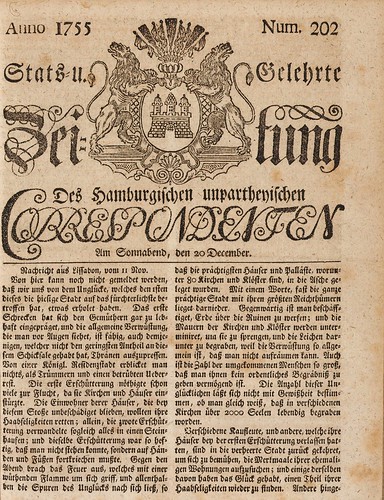
Hamburg State and University Library Carl von Ossietzky, first mentioned in 1479, is the largest general academic library in the city state of Hamburg and, at the same time, the central library of the University – founded in 1919 – and other Hamburg colleges. For the Free and Hanseatic City of Hamburg, it acts as a Federal State and Archive Library (with legal deposit since 1696) and provides professional supervisory responsibility for the libraries of institutions of higher education in Hamburg.
The collections of the library comprise more than 4 million print and electronic media. They are universal comprising all kinds of media for all subject areas, including rich special collections of manuscripts, literary bequests, early printed books, serials, music prints and charts, special subject collections on politics and peace research, administrative sciences, Spain and Portugal, offshore and deep-sea fishing and the languages and cultures of the indigenous peoples of North America and the arctic territories. Hamburg State and University Library provides a wide range of services related to Northern Germany as a historical region: a comprehensive collection, regional bibliography, special reading room, “Hamburg Wissen Digital” as a web portal for region based research, digitised material (address books, journals, maps, charts, portraits, statistics, reference works, monographs) etc.

The library lost its whole newspaper collection during the ‘operation Gomorrha’ bombing campaign against Hamburg in July 1943, together with about 80 % of its holdings in general. Thereafter a comprehensive legal deposit collection for the city state of Hamburg has been built up, whereas only small and disperse parts of the old newspaper collection could be reconstructed, for the region as well as for some national and international papers.
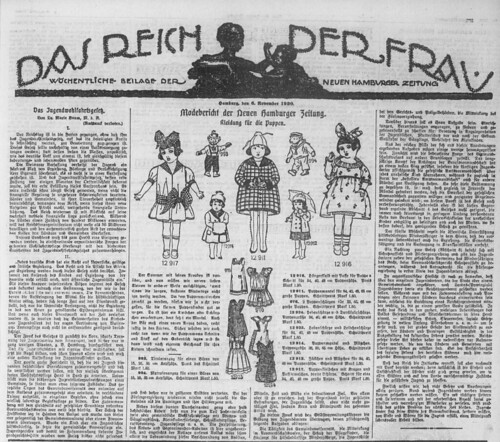
Thus Hamburg State and University Library actively supported the efforts of the Microfilm Archive of the Press in German Language and the German Research Foundation to microfilm all German newspapers. From the 1970s onwards almost all newspaper published in Hamburg or the former neighbouring cities of Altona, Harburg, Bergedorf and Wandsbek were microfilmed. By merging the preserved newspaper holdings from the Hamburg State Archive, museum libraries, the Chamber of Commerce, the State and University Library and sometimes from cultural heritage institutions outside Hamburg the microfilm runs could be cooperatively completed as far as possible.
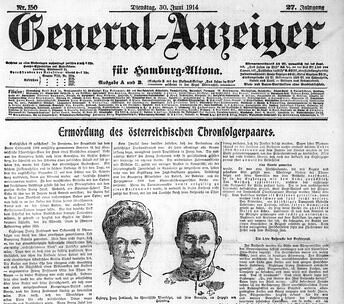
This meant that library users of historical newspapers in most cases had to use microfilms. Digitization became an urgent demand of users as well as librarians wishing to improve services and support academic research in the history of the press and the region. Newspapers are one of the most sought-after historical sources, because for the 17th to 21st centuries they reflect our political, economic and cultural history and coincidentally give an in-depth impression of everyday life.
The library prepared its first newspaper digitization project in 2011 and started scanning microfilms in 2012. Eight newspapers containing 2,5 million pages were chosen for a first tranche out of which 1,5 million pages became part of the Europeana Newspaper Project. They represent a wide variety of newspaper types:

- Hamburger Börsenhalle, 1805-1904 (united with Hamburgischer Correspondent), a business paper
- Hamburger Nachrichten, 1792-1939, beginning as an advertisement and local paper it developed into an important conservative political paper on national level, intimately accompanying Bismarck’s political career
- Neue Hamburger Zeitung, 1896-1922, the serious liberal political paper from the same publishing house Girardet as and in 1922 merged with:
- Hamburger Anzeiger, 1888-1957 (digitized until 1944), one of the most famous examples of the Generalanzeiger press, based on advertisements and liberal boulevard journalism
- Hamburger Zeitung, published 1943, July 25th to August 17th and 1944, September 1st to 1945, May 2nd as a wartime cooperative venture of the last three remaining Hamburg newspapers: Hamburger Anzeiger, Hamburger Fremdenblatt and Hamburger Tageblatt
- Altonaer Nachrichten, 1850-1941, a smaller regional and local paper from the city of Altona
- Norddeutsche Nachrichten, 1879-1943, a local newspaper for the surroundings of Hamburg
- Hamburgischer Correspondent, 1721-1934 (1905 united with: Börsenhalle), Hamburg’s most famous political paper of the 18th and early 19th centuries, Europe’s paper with the highest circulation (about 50.000 in 1803, 56.000 in 1808) during the revolutionary and Napoleonic period
All the aforementioned periodicals are or will soon be available to users of the Europeana Newspapers browser. The papers no. 1-6 are being OCR-refined within the Europeana Newspaper project. The other two are to be integrated in the European newspaper browser later as well and will possibly undergo refinement procedures later.

The Europeana Newspaper Project was the first experience of Hamburg State and University Library in mass digitization, and it was its first case of digitization from microfilms. So lots of unknown problems had to be solved, or the expertise of colleagues from other libraries had to be adapted in a proper way. A great deal of the scanning and tagging processes for the Hamburg newspapers took place when the Europeana project had already begun. So the timelines for delivering scans and metadata to our partners from the University of Innsbruck and to CCS caused a special challenge. Another complicated task originated from the case that scans from different series of microfilms for one newspaper, for example the Hamburger Nachrichten, had to be merged into one consistent chronological series of scans. The same problem occurred when supplements to a newspaper had been microfilmed separately and the data had to be inserted into the chronology of the paper itself. Currently we are doing as much headline correction as possible for the Hamburger Nachrichten which is undergoing the OCR and OLR processes at CCS.
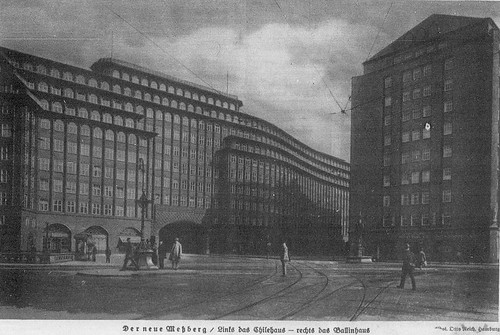
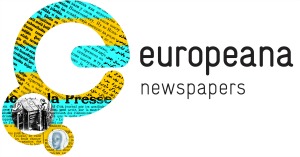
Pingback: Mass Media in Politics -Now & Then. – Meg's History Blogs
I am interested in learning about 8 lithographs by Ralf Voltmer self published in Lokstedt Bei Hambvrg in 1920.
I have no idea of where or how to research this artist or his works. Can you help me?
Thank you!
Hello, I’m currently researching on the graphic artist Ralf Voltmer from Hamburg. I know that he was living in my district in Hamburg-Bahrenfeld and I have proof in form of an old telephone book showing his profession right behind his name and address. We are researching on this topic as our housing scheme celebrates its 100. jubilee in 2020 and thus we are also gathering knowledge about all the different artists who were represented in large numbers in this area. If you have any further picture material to share I would really appreciate this. Greatings from Hamburg, Sebastian Buchholz
Pingback: 100 Days on a Fulbright: Day 32: University of Hamburg Library | Joelle Dietrick
Pingback: The ACDH virtual hackathon series: Open Data for Open Source solutions – DARIAH Open